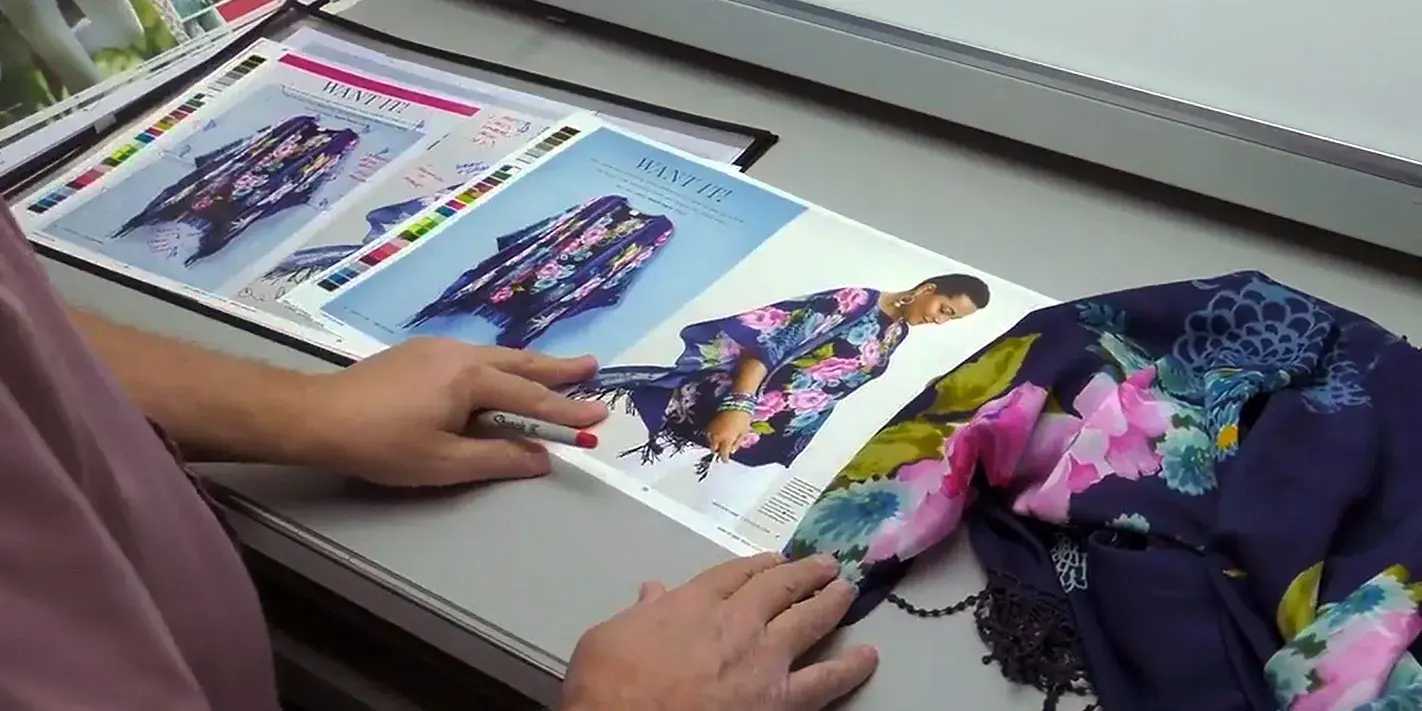Print Catalog Strategy: How to Modernize Catalogs with Digital Tech

 In 1845, Tiffany & Co. released the first-ever Blue Book catalog. For the first time, customers could shop for goods without stepping into a store.
In 1845, Tiffany & Co. released the first-ever Blue Book catalog. For the first time, customers could shop for goods without stepping into a store.
This retail revolution changed product accessibility and drastically improved the customer experience. Other retailers were quick to catch on to Tiffany’s innovative concept of mail-order shopping.
Today, the print catalog continues to thrive (but with a digital twist).
Here’s how your business can leverage the trusted tradition of print catalogs with the flexibility of digital technology to create a customer experience that's as memorable as Tiffany & Co. jewelry.
- 3 Ways to Integrate Print Catalogs with Digital
- Personalized Catalog Printing Techniques
- Color Consistency Across Print and Digital Media
3 Ways to Integrate Print Catalogs with Digital
1. QR Codes
Use QR codes to seamlessly connect customers to digital content like videos, product demonstrations, and live customer support chats.
Here are three examples of how QR codes can be used in print catalogs.
- Dynamic Content Adaptation
QR codes can redirect to dynamic content that changes based on time, location, or consumer behavior. For example, a print catalog with a QR code that links to breakfast products in the morning and dinner products in the evening. - Boost Consumer Trust and Transparency
QR codes can build deeper trust and transparency by linking to detailed product stories, sourcing information, or ethical practices. This is particularly effective in industries where product origin and sustainability information are key purchasing factors. - Enhanced Tracking and Analytics
QR codes that link to personalized URLs allow for granular tracking of user engagement and behavior.
2. Informed Delivery
The USPS offers a service called Informed Delivery®, which integrates the physical presence of print catalogs and the instant gratification of digital. This is one of the easiest forms of modern integrated marketing.
Here’s how it works.
Informed Delivery gives recipients a digital preview of their incoming mail, including catalogs. The standard digital preview is a basic black-and-white scan of the mailpiece. For a small fee, the USPS allows businesses to upgrade the preview with vibrant, full-color images and banners.


Example of a standard black-and-white scan vs. scan enhanced with ride-along content.
To maximize the benefits of Informed Delivery, here are two strategies to consider.
- Tease new products featured in the catalog with a "can't miss" banner add. The goal here is to reveal just enough to spark interest and excitement for the catalog arriving in the mail that day.
- Promote exclusive offers or content that is only accessible in the print catalog.
3. Email Marketing
The tips above work just as well with email marketing. E-commerce businesses that sent a sneak peek of their print catalog via email saw a 15% increase in sales increase in sales.
Use email marketing as a teaser to highlight key features or new products that will be available in the upcoming print catalog to build anticipation for its arrival.
Personalized Catalog Printing Techniques
Modern print catalogs can be personalized using a digital printing technology called variable data printing.
Using customer data, such as a customer's name or purchase history, variable data printing enables each printed catalog to have different content (without delaying the catalog printing and production process). Names, images, offers, and text can change from one catalog to the next for a hyper-personalized shopping experience.
The Importance of Color Consistency Across Print and Digital Media
Color consistency is the backbone of brand integrity and customer trust. However, multi-channel marketing strategies come with one major challenge: color consistency.
The inherent differences between digital (RGB) and print (CMYK) color models can cause significant variances in how colors look across print and digital channels. This poses significant challenges for e-commerce brands since color-related issues are one of the top reasons for product returns.

Catalog images before and after professional color management services.
Achieving accurate color across print and digital requires specialized expertise in premedia and color management.
For this reason, most businesses outsource the color management process to the experts at Artisan Colour.
About Artisan Colour
After opening our doors for business in 1998, Artisan Colour quickly earned a reputation as one of the nation’s top print, catalog, and color management companies.
Over the past 27 years, we have continuously invested in innovative solutions and expanded our service offerings to provide comprehensive solutions designed to build brands and grow businesses. Though our suite of services has expanded over the years, our commitment to quality and craftsmanship remains unchanged—ever driven by the artisan ethos that marked our beginning.
We have earned the trust of brands across the nation, including Neiman Marcus, Patagonia, and Amazon, and we can’t wait to earn your trust, too.
Contact our team of experts today to learn more about what we can do for your business.






